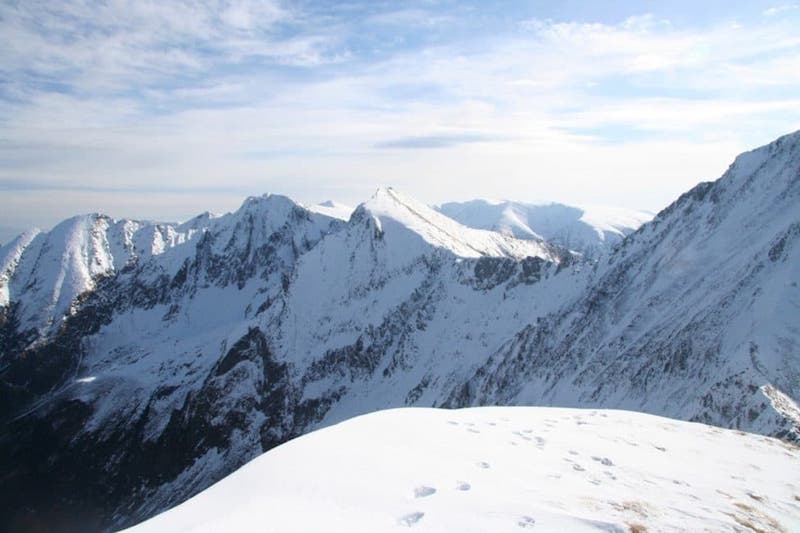Summary
So, you’re a young adventurer and you feel invincible. You’ve climbed a couple of peaks and don’t really think about what happens next. That’s at least what it was like for me back in the 80s.
Then a simple visit to my friend in Romania changed everything. He mentioned their highest peak – Moldoveanu and with me being the yes-man that I was back then, the next day we were packing for a hike. And yes, all that in the middle of the winter, young and naïve.
We made it about halfway on the ridge trail from Balea Lac to Moldoveanu, and that’s where night caught us. It was just hours before we realized that we were in a serious situation – our flimsy tents and light sleeping bags didn’t offer protection from the biting cold.
The howling winds descending from Moldoveanu were terrifying. Our tents were barely holding against nature’s wrath, and we spent the night shivering, fearful we’d freeze to death before dawn.
We didn’t reach the summit, but we survived and returned the next morning, thankful to be alive, albeit with frostbites and numb fingers.
Moldoveanu will have to wait for another time.
Stay Safe – Tips for Sleeping in the Cold
My safety tips for sleeping outdoors in cold weather will help ensure your adventure is both safe and enjoyable.
Upon returning to Portland, I reached out to my friend Bobsy, an experienced camper and hiker, who shared essential guidelines to prepare for hikes in cold conditions.
Tip 1: Warm sleeper is the dry sleeper
Ensure you change your clothes completely before going to “bed.”
Completely means just that, not just your socks or your t-shirt – it means changing into fresh, dry clothes.
While you might feel tired, changing out of damp clothes is essential to avoid becoming a human popsicle during the night. Therefore, it’s advisable to carry an extra set of clothes in your backpack.
Tip 2: Have a pot of something warm before you go to sleep
Bring tea or cocoa along with a small gas cooker.
Having a warm beverage before bed can make a significant difference. However, ensure it’s warm, not hot. Hot liquids can lead to sweating, which is counterproductive in cold conditions.
Tip 3: Nightcaps are a huge no-no
I can understand your frustration, but alcohol should be avoided if you’re feeling cold. While it may provide a fleeting sense of warmth, alcohol interferes with your body’s temperature regulation the rest of the night.
While this may not be the most fun news, it’s crucial to prioritize safety.
Tip 4: Get some good sleeping gear
Don’t cut corners when it comes to sleeping gear; quality is key.
Instead of discussing specific brands, let me describe how I prepare my sleeping area when facing cold weather:
- The first item is a foam pad, which is inexpensive but critical for insulation.
- Place a durable sleeping pad on top of the foam. Look for pads with ridges to ensure comfort. Many of these pads now pack into a bottle-sized bag, making them easy to carry.
- For sleeping attire, I recommend cotton for inner layers, while wool and synthetic materials work best for outer layers. Cotton outer layers trap moisture and decrease warmth.
- Check the expected temperatures of your destination and select a sleeping bag rated for those conditions, as indicated on the label.
- A gel pillow wrapped in a t-shirt serves as an ideal headrest, preventing slipping between materials.
- Consider wrapping your legs in a t-shirt to keep your feet warm and wake up to a cozy start.
Tip 5: Don’t fall asleep right away
Before you dismiss this advice, let me explain.
When you’re active, your blood circulates and increases body temperature. However, once you lay down, it takes about 10 minutes for the blood to settle. Only then can you determine if you need to add or remove layers for comfort.
And yes, I’ve yet to conquer Moldoveanu. Perhaps you’ll have that opportunity someday. Remember my story if you do.
Take care and sleep tight!
This post was originally written by James Menta. The story remains relevant, offering fantastic insights and tips.





